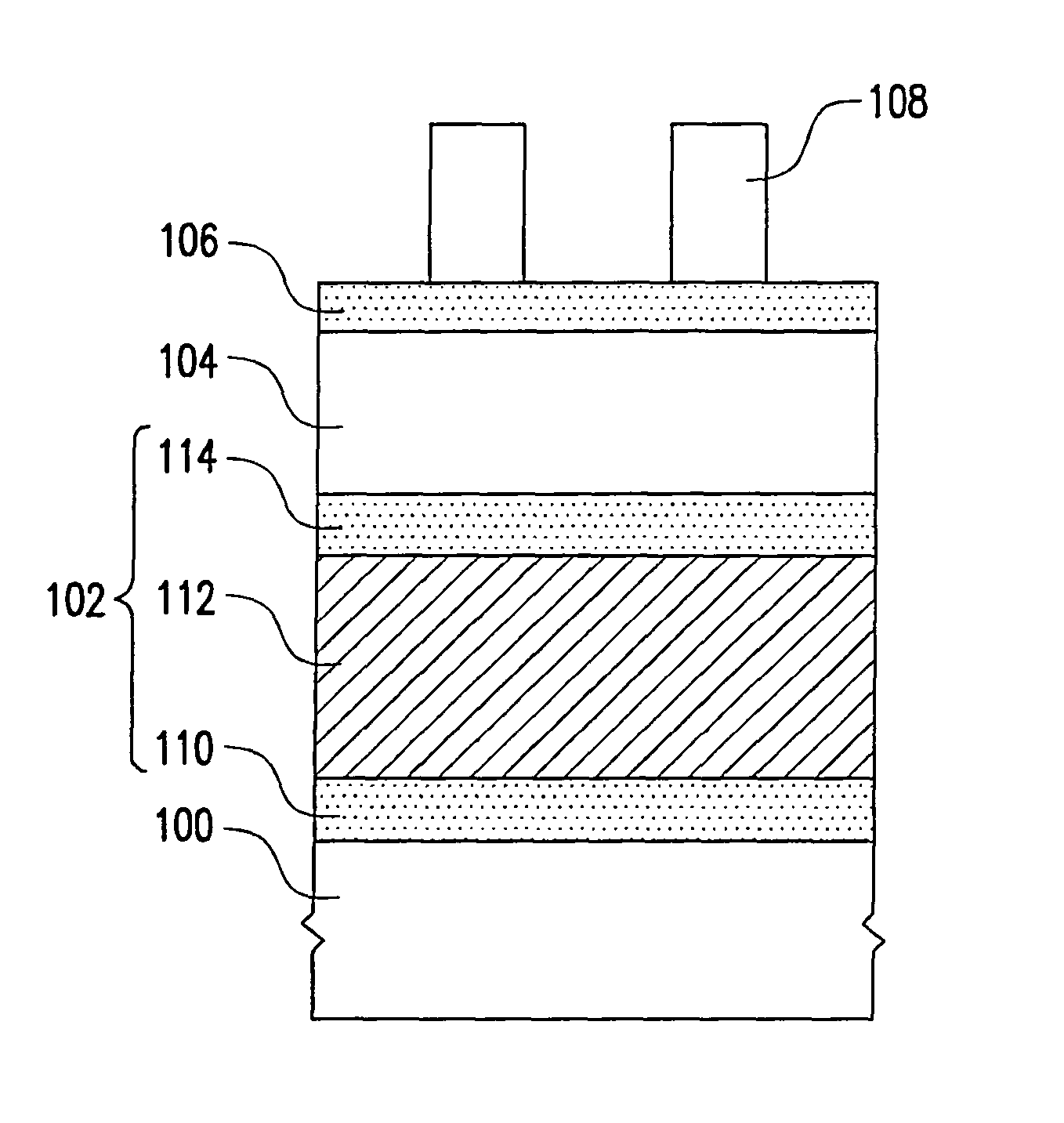Patterning method
a technology of semiconductor and pattern, applied in the direction of decorative surface effects, electrical appliances, decorative arts, etc., can solve the problems of unfavorable anti-etching ability, unfavorable anti-etching effect, and inability to achieve the miniaturization of devices, so as to avoid reflection effect and enhance resolution without losing anti-etching ability
- Summary
- Abstract
- Description
- Claims
- Application Information
AI Technical Summary
Benefits of technology
Problems solved by technology
Method used
Image
Examples
first embodiment
[0043]The present invention can be applied to the process of fabricating a line width less than 80 um, such as a metal line of 65 nm or 45 nm.
[0044]In this embodiment, a structure of FIG. 1A is formed first, wherein the objective material layer 102 may be a sandwich structure including a barrier layer 110, a metal layer 112 and an anti-reflection layer 114 which are sequentially formed on the substrate 100. The barrier layer 110, the anti-reflection layer 114 and the stop layer 106 may include the same material such as refractory metal, refractory metal nitride or combinations thereof. For example, the barrier layer 110 and the anti-reflection layer 114 include a material selected from the group consisting of Ti, TiN, Ti / TiN, Ta, TaN, Ta / TaN, W, WN and W / WN. The material of the metal layer 112 includes Cu, AlCu or AlSiCu, for example. The method of forming the barrier layer 110, the metal layer 112 and the anti-reflection layer 114 includes sputtering or CVD, for example. The materi...
second embodiment
[0051]Like the first embodiment, the second embodiment is for fabricating a space less than 80 nm, especially for reducing a gap width by applying the patterning method of the present invention. FIGS. 1C′ to 1D′ schematically illustrate a cross-section view of a patterning method according to another embodiment of the present invention.
[0052]In this embodiment, a structure of FIG. 1B is formed first, wherein the materials and methods of forming the objective material layer 102 (including the barrier layer 110, the metal layer 112 and the anti-reflection layer 114), the patterned layer 106a and the patterned photoresist layer 108 are similar to the above-mentioned embodiments. It is noted that the material of the mask layer 104 of the second embodiment is different from that of the first embodiment. For example, the material of the mask layer 104 includes SiN or SiON.
[0053]Referring to FIG. 1C′, the mask layer 104 is etched, using the patterned layer 106a as a mask, to form a pattern...
PUM
| Property | Measurement | Unit |
|---|---|---|
| thickness | aaaaa | aaaaa |
| thickness | aaaaa | aaaaa |
| thickness | aaaaa | aaaaa |
Abstract
Description
Claims
Application Information
 Login to View More
Login to View More - R&D
- Intellectual Property
- Life Sciences
- Materials
- Tech Scout
- Unparalleled Data Quality
- Higher Quality Content
- 60% Fewer Hallucinations
Browse by: Latest US Patents, China's latest patents, Technical Efficacy Thesaurus, Application Domain, Technology Topic, Popular Technical Reports.
© 2025 PatSnap. All rights reserved.Legal|Privacy policy|Modern Slavery Act Transparency Statement|Sitemap|About US| Contact US: help@patsnap.com



